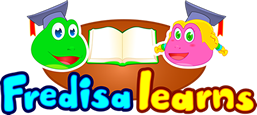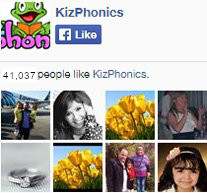Phonics Alphabet
Mastering the Phonics of Alphabets: Key Techniques for Effective Teaching
Learning to read is a fundamental milestone in a child's educational journey. One of the cornerstone skills that paves the way for successful reading is understanding the phonics of alphabets. Phonics, the relationship between letters and the sounds they represent, forms the basis of early reading skills. In this article, we will explore the importance of phonics alphabets and delve into five essential techniques for teaching them effectively. At Kiz Phonics, we develop skills in this area under our preschool curriculum found here (https://www.kizphonics.com/phonics-program/preschool/). You will find a combination of teaching resources for phonics alphabet which include games, videos, worksheets and audio materials.
The Significance of Phonics Alphabets
Phonics alphabets are the building blocks of reading and writing. They provide children with the tools to decode words and understand the correspondence between letters and their sounds. Proficient phonics skills enable young learners to read unfamiliar words independently and lay a solid foundation for fluent reading. By emphasizing the phonics of alphabets, educators empower students to unlock a world of literature and knowledge.
Technique 1: Multisensory Approach
Engaging multiple senses during phonics instruction can enhance learning retention. Incorporate visual aids like flashcards displaying each alphabet letter alongside a relevant image. Auditory learners can benefit from rhyming games and phonics songs that highlight the sounds of different letters. Tactile activities, such as tracing letters in sand or forming them with playdough, cater to kinesthetic learners. This multisensory approach accommodates various learning styles, making phonics alphabet lessons inclusive and effective. We provide all the resources you need to teach under our preschool phonics curriculum.
Technique 2: Systematic and Sequential Lessons
We organize our phonics lessons in a systematic and sequential manner. Start with teaching individual letter sounds and their corresponding symbols. Once students grasp these basic phonics alphabets, progress to teaching blends, digraphs, and sight words. Each lesson should build upon the previous one, gradually expanding the phonemic repertoire. This structured approach ensures a strong foundation and prevents overwhelming learners with complex concepts prematurely.
Technique 3: Interactive Phonics Games
Learning through play is a proven strategy, especially for young learners. Interactive phonics games make the learning process enjoyable and engaging. Create bingo cards with various letter combinations, call out sounds, and have students mark the corresponding letters. Kiz Phonics offers a plethora of interactive phonics alphabet games that challenge students while reinforcing their understanding. By infusing playfulness into phonics lessons, educators can keep students motivated and eager to learn.
Technique 4: Word Building Activities
As students grasp individual letter sounds, progress to word building exercises. Provide a set of letter cards and guide students to form simple words. Gradually increase the complexity of the words, incorporating different phonics elements they have learned. Encourage students to read the words aloud, reinforcing the connection between letters and sounds. Word building activities enable learners to apply phonics knowledge in context and enhance their reading and writing skills.
Technique 5: Read-Aloud Sessions
Reading aloud to students exposes them to a rich array of words and their corresponding sounds. Choose phonics-rich books that emphasize specific letter sounds or patterns. During read-aloud sessions, pause to discuss the phonics elements present in the text. Encourage students to identify words that showcase the targeted phonics alphabet, fostering a deeper understanding of how letters and sounds interrelate. Read-aloud sessions create a supportive learning environment and promote active engagement with phonics concepts.
In conclusion, mastering the phonics of alphabets is a pivotal step toward becoming a proficient reader. By implementing a multisensory approach, delivering systematic lessons, incorporating interactive games, facilitating word building activities, and conducting engaging read-aloud sessions, educators can effectively teach phonics alphabets. These techniques empower students to decode words, enhance their vocabulary, and embark on a lifelong journey of reading success. As educators embrace these strategies, they pave the way for a generation of confident and skilled readers who are well-equipped to explore the world of literature and knowledge.











